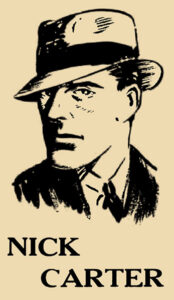 We usually think of pulp magazines as selling themselves — that their garish, often lurid covers splashed across newsstands were all it took to propel the fiction magazines into the hands of eager readers.
We usually think of pulp magazines as selling themselves — that their garish, often lurid covers splashed across newsstands were all it took to propel the fiction magazines into the hands of eager readers.
But pulp publishers weren’t satisfied with simply relying on the magazines themselves. They turned to tried-and-true methods of advertising.
Think of this as installment four of a series on “selling” the pulp magazines to readers.
The first post, “Selling the pulps with posters,” was way back in July 2014. “Selling the pulps with posters, II” appeared this past December. In both of those posts I took at look at posters that pulp publishers gave to magazine vendors to promote sales.
A couple of weeks after that first post in 2014, “Ads for The Shadow” featured a collection of full-page ads for The Shadow Magazine that appeared in Picture Play, a movie-fan magazine published by Street & Smith Publications Inc.
We return to the pages of Picture Play today with a look at a few full-page ads for other Street & Smith pulps.
First up is an ad for the long-running Detective Story Magazine featuring a reproduction of the July 30, 1932, cover. It appeared in the September 1932 number of Picture Play.
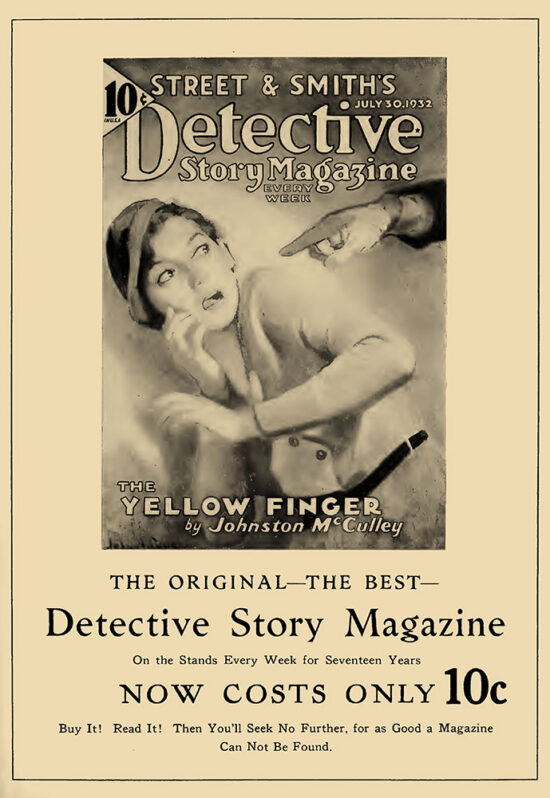 (Click these ads for a larger view.)
(Click these ads for a larger view.)
The timing seems a bit off with these dates. Remember, the cover dates on magazines weren’t when they were published or appeared on newsstands. Rather, the dates indicated when the magazines could be removed from the sales rack.
Detective Story Magazine was a weekly at this time, while Picture Play was a monthly. So the time when these two magazines overlapped on the newsstands was pretty short.
That particular issue of DSM touted a very popular author, Johnston McCulley, the creator of Zorro and other pulp characters. So maybe the intent was to generally promote DSM by showing that it featured top authors, rather than just pitching this particular issue.
Next up is the first of a pair of ads for the new Nick Carter Magazine.
Nick Carter had been around since 1886, appearing in Street’s earlier fiction publications called dime novels. With the popularly of the single-hero pulp magazines, ignited by Street’s own The Shadow Magazine in 1931, the publishing giant decided to “reboot,” as we say today, the Nick Carter character as a pulp hero beginning in March 1933.
The first ad appeared in the May 1933 number of Picture Play, touting his return.
This second Nick Carter ad first appeared in October 1933, and later in December 1933 and February 1934.
This iteration of Nick Carter magazine continued only until the June 1936 number.
Street also used a broader brush in promoting its pulp magazines. This next ad appeared in the January 1934 Picture Play, handy for anyone still looking for a gift to give a reader. (Remember that date indicates the end of its time on the newsstand, not the beginning.) Street & Smith had quite a roster of magazines at that time.
Lastly (at least for today), Street celebrated its 80th anniversary with a gallery of illustrated covers from its magazines. This ad appeared in the March 1934 Picture Play.
Here’s an example of Street playing a bit loose with dates. Francis S. Street and Francis S. Smith, the company’s eponyms, bought their first publication, The New York Weekly Dispatch, a story paper, in 1855. So 1934 wasn’t quite the company’s 80th anniversary.
Next time, we’ll take a look at a collection of Love Story Magazine ads.

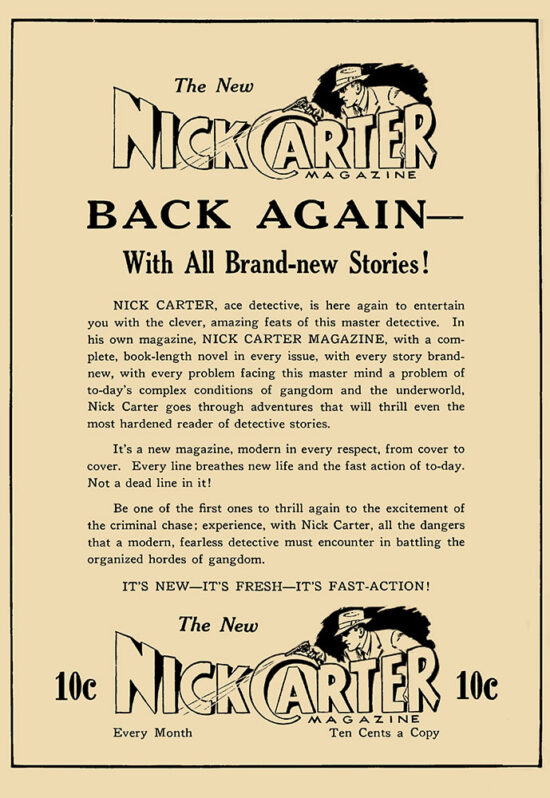
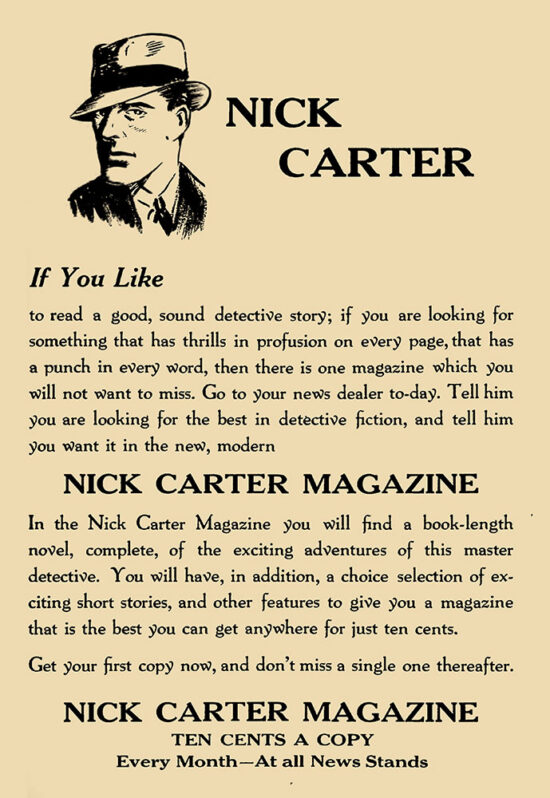

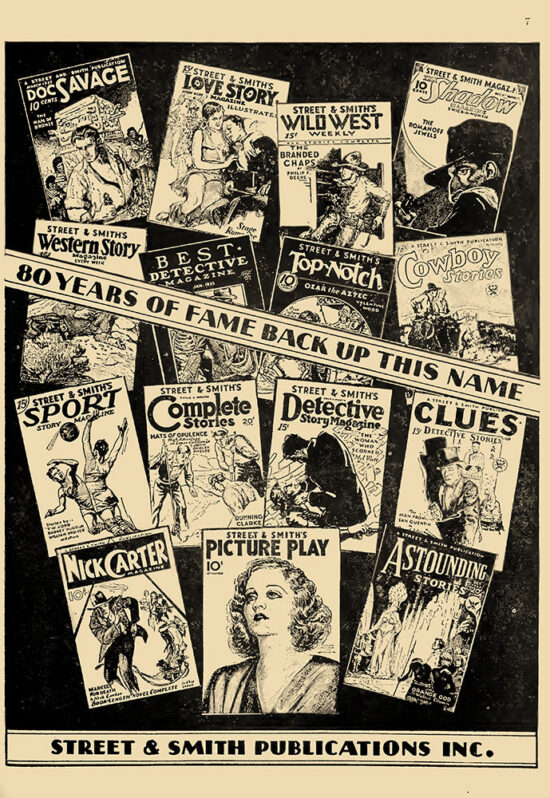

Thanks for this post Bill. I’m looking forward to the next post on LOVE STORY MAGAZINE ads.
Thanks for sharing these Bill. I find this kind of thing fascinating.
Testing